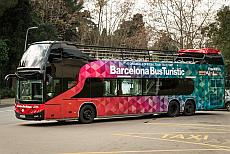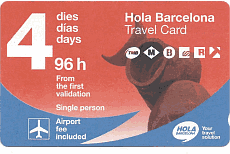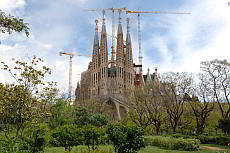Via Sepulcral Romana - Roman cemetery of the 1st - 3rd century
Great insight of living and dying in the Roman Barcino
The Via Sepulcral Romana is a cemetery from the Roman Age. The Roman law forbad funerals inside of the city walls from the 1st until the 3rd century. That's why the necropole was established outside of the city walls of Barcino, the former name of Barcelona.
The necropole, located on the Plaça de la Vila Madrid today, was build along a path, which led from today's district Sarrià to the western portal of the Cardo Maximus. The Cardo Maximus is one of the two main axles of Barcino and leads from east wo west. The main axle leading from north to south is called Decumanus Maximus. You can find this pattern a lot in Roman settlements.
The former Cardo Maximus is vaguely the c/ Boqueria today, that leads to Plaça de Jaume, even though the Roman course of the road is not adequate to the one of the gothic. The Plaça de Jaume is the intersection of Cardo and Decumanus.
The Roman Barcino
In Barcelona you can see the largest Roman excavations outside of Rome. At the museum of the city's history you can see that the grave stones were used to build the city walls.
Museu d'Història de la Ciutat - The museum of Barcelona's history
Especially people of the middle and under class (slaves and freedmen) were laid to rest in the burial ground of Via Sepulcral. Altogether 85 graves with the remains of more than 200 people are known, howerver only one part was laid open or is preserved and open for visitaion today.
On both sides of the Roman funeral path several funerary monuments are located without a regular arrangement: altars, stelae and especially cupae - half circled grave stones, which remind of wooden barrels and which are very typical for Roman funerals. The cemetery on the Plaça Villa de Madrid was used from the 1st until the 3rd century. In the following decades the cemetery vanished under fluvial sediments, that saved the monuments from decomposing. We have to thank this natual preservation for having the Via Sepulcral as one of the best preserved Roman necropoles. Funerary monuments at different places were used for the construction of the Roman city walls in the 4th century.
When the medieval and modern city evolved, a Carmelite monestary was established on the fluviatile sediments in 1588. After the monestary was demolished in the civil war, the area was modified into a square. During groundwork in 1956, the cemetery was discovered. Further discoveries followed in 1959. The renovation of the square and of the graves was finished in 2010, even the little park was designed the way it was supposed to look about 2.000 years ago.
The necropole at the Via Sepicral is not part of Barcelona's most spectacular sights. However it gives a substantial insight of living and dying in the Roman Barcino. A little museum represents this desciptively.
Book here a gothic walking tour:
Important information
Surroundings
Find Hotels nearby
Address
Plaça Vila de Madrid
Phone: +34 932 562 100
Arrival
Metro: Catalunya (L1, L3, C1, L7, S1, S55, L6)
Bus Turístic: Plaça Catalunya
Parking nearby
Opening times
Tue. to Fri., 11:00 to 14:00; Sat. and Sun. 11:00 to 19:00. Closed Mondays.
Closed: 1 Jan., 1 May, 24 June and 25 Dec.
Admission
Standard ticket: 2 €
Concessions: 1,5 € for people under 29, over 65, and holders of Barcelona library cards, targeta rosa reduïda, large family cards and single-parent family cards and groups over 10 people.
Entrance without charge: children under 16, holders of targeta rosa gratuïta and Barcelona Card, members of ICOM and Catalan Museologist Association, tourist guides, accredited journalists, assistants for disabled people and secondary school teachers. Entrance free to all on the first Sunday of the month; all other Sundays free after 15:00.
Die Via Sepulcral Romana
Book your accommodation in Barcelona here! All categories.
1-5*-hotel rooms, apartments, hostels.










